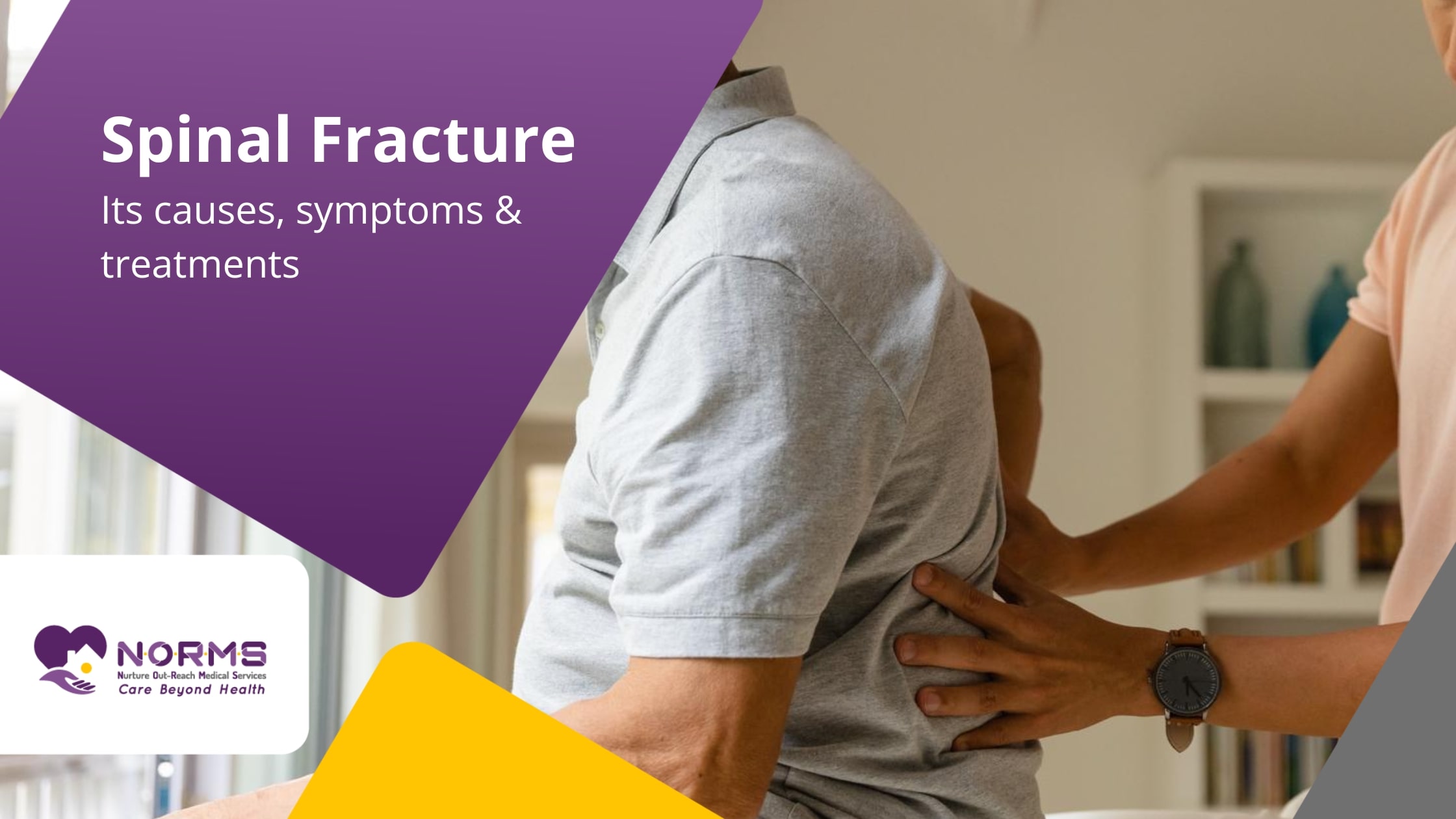
Accidents can cause injuries or trauma, either severe or moderate, and sometimes none at all. Some might not experience pain at first but it slowly worsens as time passes. Spinal fractures in this case should not be misunderstood as normal back pain, as neglecting the pain can lead to permanent damage to the body, especially in the elderly.
In this article, we will understand what a spinal fracture is, along with the common causes, expected symptoms, and required treatments.
A dislocation or fracture of the vertebrae (backbone) is termed a spinal fracture. Anywhere along the spine is susceptible to a fracture. Certain spinal fractures can be treated with just proper rest and medications, but some might need to be performed surgeries on due to the severity of the injury.
It is necessary to diagnose the problem early on instead of ignoring it and believing it will go away. Prolonged non-treatment can lead to severe consequences such as permanent damage to the nerves and spinal cord, along with paralysis.
There are 4 major types of spinal fracture with each type further being categorized into different severities:
Patients with osteoporosis, osteopenia, bone cancer, or patients with other cancers receiving chemotherapy or radiation therapy are vulnerable to compression fractures. The vertebra is fragile, frail, and thin. The bone may fracture as a result of blunt impact or high pressure.
When the vertebrae are compressed by external forces, such as an automobile accident, a burst fracture develops. Usually, it happens in several locations, which allows the bone fragments to travel and lodge in the spinal cord or other soft tissue structures. These do the most harm and are the most difficult to fix.
Flexion-distraction fractures happen when the body is abruptly forced forward, as in an automobile accident or rapid stop. The vertebra or vertebrae may fracture, depending on the degree of force applied. These typically appear in the vertebrae’s middle and posterior areas.
When a vertebra is significantly damaged from front to back to allow it to move side to side or back and forth, it causes a fracture-dislocation, which is an extremely unstable condition.
When a spinal fracture is diagnosed, it is then examined to determine the severity of the damage. It is usually categorized into stable, unstable, minor, and major fractures.
As with any other fractures, spinal fractures are caused by a direct and harsh blow to the backbone. A few common causes are injuries or trauma that develop from:
These are the most common causes of spinal fracture, but any kind of forceful impact on the back can lead to any kind of spinal fracture.
Spinal fractures are painful to a person of any age. It can happen to anyone, anywhere. But how exactly does it impact an elderly person? Spinal fractures, particularly compression fractures, commonly occur in the elderly. This is usually due to osteoporosis as the bone deteriorates and becomes vulnerable to compression fractures.
Aging can cause the body to become frail, and even more with spinal fractures. With added back pains, it can lead to the inability to carry out daily tasks. Proper treatment and prevention must be maintained to ensure a long and healthy life.
An obvious symptom of a spinal fracture would be prolonged back pain that worsens with time. Other symptoms that are likely to arise are:
Diagnosing a spinal fracture typically involves a combination of medical history review physical examinations, and imaging tests. Here are the primary methods used for diagnostics.
They will first check for any medical history of the patient and then proceed to a physical examination, which includes assessing tenderness, swelling or deformity of the spine.
X-rays provide a detailed image of the bones and can identify fractures, misalignments, or other abnormalities in the spine. They are often the first imaging test that is ordered for suspected spinal fractures. Apart from X-rays, CT scans and MRIs might also be taken.
Bone scans involve injecting a small amount of radioactive material into the bloodstream, which then accumulates in areas of bone damage or injury. This can help identify spinal fractures that may not be visible on X-rays or CT scans, particularly in the case of osteoporotic fractures or stress fractures.
In cases where a spinal fracture is suspected to have neurological symptoms, such as weakness, numbness, or difficulty walking, a neurological evaluation may be performed.
Spinal fractures can easily be treated if diagnosed early on. Treatment usually starts with pain management and stabilization to prevent the risks of more injuries. Healthcare professionals would suggest medication or surgeries based on the severity of the fracture. Certain procedures would be:
Orthotics & Braces achieve three things:- spine alignment, spine immobilization & reduction of discomfort. It is used to recover safely without any kind of surgery. The period of using orthotics and braces is usually 8-12 weeks, and at times of unstable fractures, traction may be performed.
These are operations used to treat unstable fractures. Fusion is the uniting of two vertebrae using a bone graft secured by hardware, which can include cages, rods, hooks, plates, or pedicle screws. Joining the vertebrae above and below to make a single, solid piece of bone is the aim of the bone graft. A solid fusion could take several months or more to form.
These are used to treat compression fractures that are frequently brought on by osteoporosis and spinal tumors. During a vertebroplasty, a hollow needle is used to inject bone cement into the damaged vertebral body. Before filling the area with bone cement during kyphoplasty, a balloon is introduced and inflated to extend the compressed vertebra.
The spinal fracture can be quite challenging, especially when you suffer from it at an older age. Nevertheless, with adequate care and immediate management of the spinal fracture, the body will be fine.
Mild fractures can be cured with rest and medications, severe ones might require surgery.
With adequate rest, physiotherapy, and medication, yes they can walk.
It takes about 6 to 12 weeks to heal entirely.